These days, the big word in Norwegian drink circles is actually pretty small. It’s mikrobryggeri. “We’ve had microbreweries in the U.S. since the 1980s,” you scoff. True, and after three decades we’ve got upwards of 2,000. But consider this: The Vikings were among the first to brew hand-crafted beers. And for hundreds of years Norwegian farmers have practiced the art of brewing. Certain towns even required farmers to brew beer. Anyone failing to do so was fined, and after three offenses exiled. Rumor has it that’s how Iceland got settled.
Norway’s home brewing tradition might have blossomed into an industry centuries ago as in Germany where some microbreweries date back 500 years. But in 1922, in an effort to save its people from strong drink, the Norwegian legislature created the Vinmonopolet, or Wine Monopoly, indirectly curbing small breweries, which tend to make rich beers with high alcohol contents. That, along with various other regulations, limited microbrewery launches for a very long time.
It also helped create Norway’s beer monopoly. Today, 85% of the Norwegian beer market is controlled by two companies: Ringnes, the largest and owned by Denmark’s Carlsberg Brewery, with breweries outside Oslo and Trondheim, and Hansa Borg, which recently hopped on the craft brewery bandwagon by launching Waldemars Mikrobryggeri. Of large independent breweries the biggest is Mack, which has a 7% market share and recently started its own microbrewery label, Ludwig. The other large independents—Aass, Grans and Trio—have market shares of 1-5%. As for Norwegian beers, roughly 98% are pale lagers, though at Christmas time spicy dark beers, called juleøl, appear.
Oslo Mikrobryggeri was founded in 1989, but from 2000 to 2005 other Norwegian microbreweries began to make their presence felt with a vengeance, reaching critical mass around 2010. Norway now has about 40 microbreweries, and that number is growing. Many began as home-brewing operations like Lindesnes Brygghus, whose beers are sold in the Cardinal Pub in Stavanger, and at Ølhandlieriet and Øltorget in Oslo’s Mathallen. Some are based on farms like Inderøy Gårdsbryggeri, served at Olympen in Oslo, the Cardinal Pub in Stavanger and Ramp in Trondheim. Out in the sticks are Atna Øl, in an old flatbread factory in a town of 250 residents, and Det Lille Bryggeriet, “the little positive wilderness brewery from Rena.” Lervig Aktiebryggeri was started in 2003 by local enthusiasts in Stavanger after Ringnes closed its Tou brewery there. A handful of microbreweries have evolved into full-fledged companies with CEOs, marketing directors and a half-dozen or more employees.
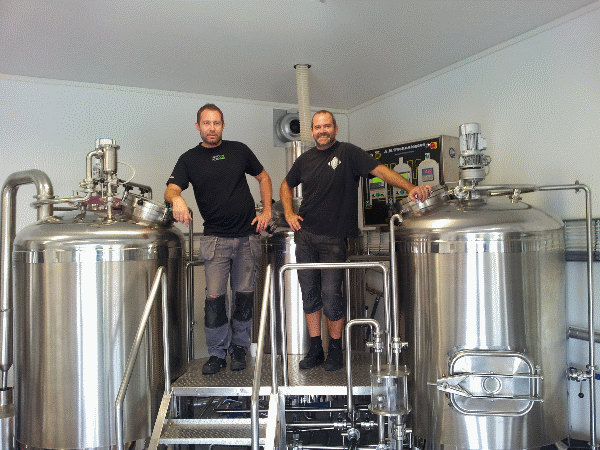
Big or small, all Norwegian microbreweries share a common passion to brew “real beer,” unfiltered, unpasteurized and made from the world’s finest malts and hops, then “bottle-conditioned” or left to ferment naturally in the bottle. Take a sip of these brews and you’ll be hooked by a complexity, smoothness and aroma usually associated with fine wine. Though borrowing from the brewing traditions of Germany, Belgium, England and the U.S., Norwegian microbrewers also share a love of experimentation. You’ll find beers brewed with berries, juniper branches, birch sap and other distinctly Scandinavian ingredients. At the Espedalen Mountain Brewery, a four hour drive north of Oslo, Arthur Bredel, who has a background in defense, brews a beer flavored with a small amount of gunpowder.
Below are Norway’s top three microbreweries, with brews in big-city restaurants and on-site beer tastings and tours.
Nøgne Ø: “My wife knew all along that this was a bad idea,” says chief brewer Kjetil Jikiun. That was back in 2002, when the former SAS pilot, after four years as a home brewer, opened Nøgne Ø in Grimstad, a four-hour bus or car ride south of Oslo. Today, Nøgne Ø is Norway’s largest producer of craft beer, and Europe’s first and only producer of sake. “The uncompromising brewery,” Nøgne Ø uses only the finest malts and hops to make feisty, full-bodied beers that are top-fermented and bottle-conditioned and can be saved for years, even decades.
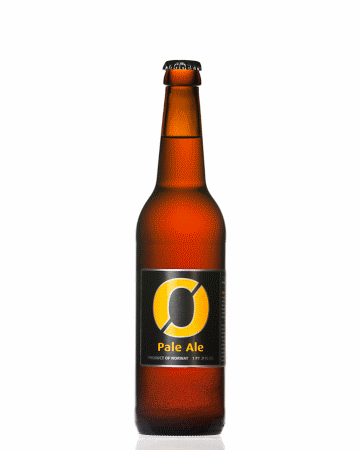
The microbrewery’s range includes a Bitter, a Blonde, an India Pale Ale, a Global Pale Ale (with hops from 13 different countries), Brown Ales, Stouts and Porters. A deep, dark Sunturnbrew, which, brewers say, is made on the shortest, darkest day of the year “is best enjoyed in front of the fireplace while a winter storm is trying to knock down your house.” Europe’s first sake brewery makes three sakes—redolent of yellow chrysanthemums and cantaloupe, citrus or watermelon—using the more traditional Yamahai method and quality yeast and rice. In addition to guided tours and tastings, Nøgne Ø is sold at Vinmonopolet government stores in Oslo (Vika) and Bergen (Valkendorfsgate). Beers and sakes are served at bars or restaurants in more than a dozen Norwegian cities, including Ålesund, Bergen, Oslo, Tromsø and Trondheim. Nøgne Ø’s exports to the U.S. are handled by Shelton Brothers of Belchertown, Massachusetts.
Haand Bryggeriet: Haand Bryggeriet has come a long way from the days when its home page was an impassioned rant against government laws. Started in 2005 by four beer enthusiasts in an 1874 hosiery factory in Drammen, a former shipbuilding and industrial town that’s a 35 minute car or train ride from Oslo, Haand Bryggeriet survived a difficult infancy and moved to a state-of-the-art brewery in December 2011. But the microbrewery—whose logo features four red fingerprints and a red thumbprint—has not departed from its earliest mission statement: “Norwegian people deserve a much wider beer selection than what exists today…mainly filtered or pasteurized beer products where the beer is killed. We, however, will brew living beer.”
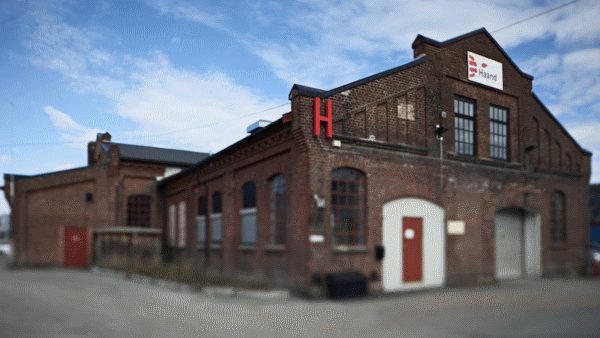
The brewers are also committed to creativity, “daring,” they say, “to blow it occasionally.” Among roughly a dozen “basic beers” are Belgian style Ardenne Blond, Pale Ale, India Pale Ale, London Porter and Norwegian Wood, farmhouse ale made the traditional way with hand-picked juniper berries and branches. There’s also Dark Force (possibly the world’s only Imperial Stout wheat beer) and Sunlandveien Kreasot, an India black ale that (its creators say) is reminiscent of creosote, used on railroad cars and a tribute to the brewery’s home in a 1900’s former railway workshop. Berry-infused beers include Crowberry (Krekling), Buckthorn (Tindved), and Blåbic, wild blueberry ale that’s a true lambic. Guided tours and tastings are available. U.S. imports are handled by Shelton Brothers.
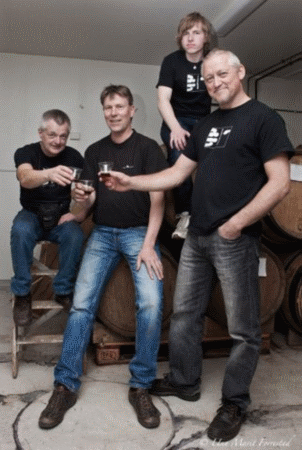
Ægir Brewery and Pub: Most married couples buy a house, have a few kids and maybe get a dog or cat. But Evan Lewis, a Rochester, N.Y. native with a brewer’s diploma from Copenhagen’s Scandinavian School of Brewing, and Aud Melås, a former manager of a Japanese commercial bank in the U.S., got a brewery and pub, a 41-room hotel, a restaurant and most recently, an aquavit distillery. In western Norway, their Flåmsbrygga complex is at the tip of the legendary Aurlandsfjord, and steps from the Flåm train station, a stop on Fjord Tours’ “Norway In A Nutshell” rail, bus and boat adventure.
The complex might seem too well-planned to be a Norwegian microbrewery, which often starts with a passion fueled vision rather than a business plan. And while Ægir might sound more like a brewpub than a brewery, its fine beers captured three silver medals from the Australian International Beer Awards (AIBA) in 2011 and three AIBA bronzes in 2013. Ægir, which opened in 2007 with an annual production of 120,000 liters, opened a new production facility in 2012 with an annual capacity of 600,000 liters.
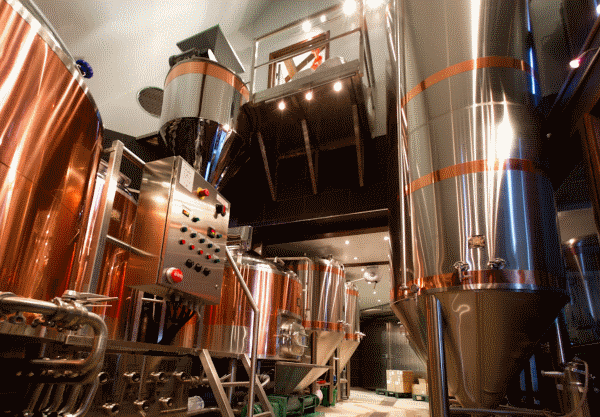
Named after Ægir—an ocean god who brewed beer atop Mt. Asgård in a hall lit by pure gold—the brewery, with slate floors, rugged wood and a towering fireplace, looks out of a Scandinavian myth. Among 33 imaginatively crafted brews are Bøyla Blonde (with a citrusy nose), Ægir India Pale Ale (which won Beer of the Year in 2012), Siv Whitbier (a Belgian style wheat beer), Lindisfarne Scotch Ale (with a smoky peatiness) and Lynchburg Natt (an Imperial Porter aged in old whisky barrels from Lynchburg, Tennessee). In addition to a five-beer tasting, there’s a six-beer tasting with a tour of production facilities with Evan Lewis. A beer and aquavit tasting includes the brewery’s Yggdrasil aquavit. The brewery pub has a “tapas” buffet—including beer-marinated trout and pork ribs—as well as salads, soups and burgers. The Flåmstova restaurant has an à la carte menu, a summer lunch and dinner buffet, and a Chef’s Bar & Food Menu. On-site meetings and team building exercises in Flåm’s great outdoors can be arranged.
[alert type=white]
The area code for Norway is 47.
Ægir Brewery & Pub – Viking-style Ægir has award-winning ales, an aquavit distillery, two restaurants and a hotel. Tours and tastings available. Flåmsbrygga, P.O. Box 44, N-5742 Flåm, 57-63-20-50. www.aegirbryggeri.no
Atna Øl – Sporting a wolf paw logo, Atna beer comes from the wild, but shows up on the best tables. Visitors welcome. N-2476 Atna, 62-46-30-24. www.atnaol.no
Det Lille Bryggeriet – The little wilderness brewery from Rena, 105 miles north of Oslo, sells its brews to local eateries as well as Oslo’s Lofotstua restaurant. N-2450 Rena, 48-95-21-13. www.detlillebryggeriet.no
Espedalen Mountain Brewery – Quite possibly Norway’s highest brewery, this operation brews gunpowder-flavored beers, Cotopaxi Stout made with Ecuadorian coffee, a darkly sinister Gates from Hell Porter and birch sap ale. The Route Mountain Lodge, N-2658 Espedalen, 47-61-29-73-20. www.ruten.no
Haand Bryggeriet – Early struggles are paying off for this highly respected creative microbrewery 25 miles southwest of Oslo. Skogliveien 4, Building H, Sundland, N-3047 Drammen, 31-41-41-40. www.haandbryggeriet.net
Inderøy Gårdsbryggeri – At this farm, 90 minutes from Trondheim, brothers Per Morten and Steinar Kvam brew beers inspired by American India Pale Ales, Belgian Tripels and foreign Stouts. Tastings and day-long brewing classes available. Arfallvegen 86, N-7670 Inderøyningen, 922-54-112. www.igb.no
Lervig Aktiebryggeri – Beer activists brew stout, winter ale, Czech-style Pilsners and barley wine. Vierveien 1, Hillevag, N-4016 Stavanger, 51-81-25-00. www.lervig.no
Lindesnes Brygghus – Growing Lindesnes brews beers found at Cardinal Pub & Bar in Stavanger, and Ølhandleriet and Øltorget in Oslo’s Mathallen. Gahre Industrial Park, N-4521 Lindesnes. www.lindesnesbrygghus.no
Nøgne Ø Brewery – Known for finely crafted ales, this internationally known microbrewery is the site of Europe’s first and only sake distillery. Lunde 8, N-4885 Grimstad, 37-25-74-00. www.nogne-o.no
*For more information on Norway travel, there’s no better tool than a DK Eyewitness Travel Guide.
[/alert]

